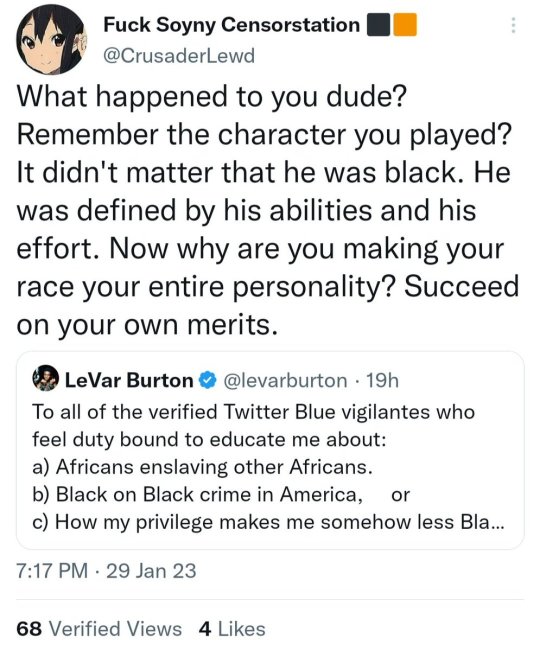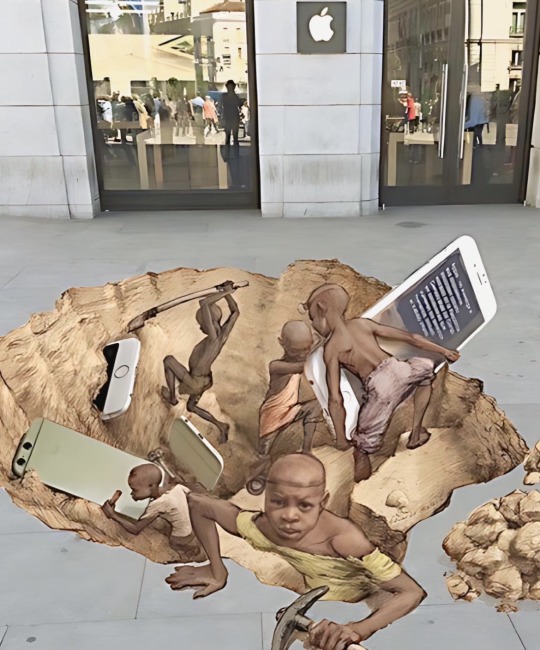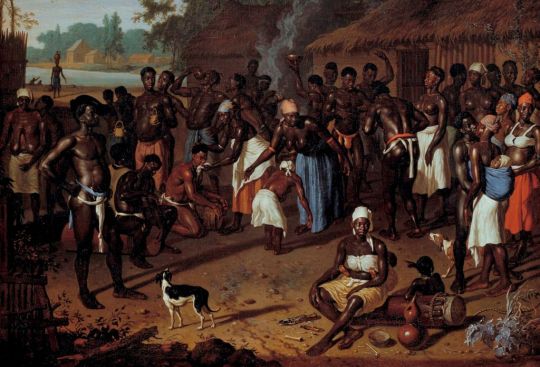#african slavery
Text

For the ppl in the back!!
#black tumblr#black history#black literature#black excellence#black community#civil rights#black history is american history#civil rights movement#equality#equal rights#black lives matter#black pride#black people#equal#african slavery#american slavery#african american history#american history
2K notes
·
View notes
Text
Gentlemen, Rustics, Accents, and Imperialism
Reflecting on binary oppositions in The Patriot, I'm surprised (and a little embarrassed) that I haven't discussed one of the more obvious ones: foreigner/native. Oh, this is a thorny one! For the sake of what I'm hoping and praying will be brevity, for once, I'm going to focus on how this distinction is portrayed through characters' accents. It turns out that accent choices do a lot of heavy lifting in this film to conceal historical truths, particularly those that paint South Carolina Patriots in an unflattering light.
The first accent to cover is the most often heard foreign one, and it is, almost, one accent. Although the 18th century British Army was full of men who joined to escape a life of poverty or at least found it be a better option for supporting their families than the professions available at home, we never hear them. There are no Cockney redcoats in this film. The accent we do hear often--from Cornwallis, O'Hara and Tavington--belongs to the landed gentry. The only British character who does not share it is the wounded private Tavington interviews after Martin's massacre in the woods, who is also the only speaking British soldier below the rank of captain. By comparison, the Americans have different accents and are represented by people of different classes, upholding a distinction between the oppressed, poor native-born population and an oppressive, wealthy foreign one that has little basis in historical reality.
While the difference in class and accent for Americans is more accurate, the accents themselves are not. The one belonging to Martin and his children, Charlotte Selton, the Howards, and James Wilkins is recognizably American but not distinctly Southern. More likely, Colonists would have had accents reminiscent of their, or their parents', country of origin (something AMC's Turn: Washington's Spies captures far more effectively than The Patriot). The development of distinct, regional accents takes generations. Interestingly, the more rustic characters, the ones we first meet when Martin and Villeneuve recruit at the rowdy tavern, do have clear, modern Southern accents. I'll return to this later, but for now I wonder why there has been time for some South Carolinians to develop a thick backwoods Southern accent but not for others to develop the kind of genteel Southern drawl spoken by such specimens as the Epps in Steve McQueen's 12 Years a Slave. In this respect, Charlotte and Tavington are near perfect opposites. He has lost the land and wealth that were his birthright but kept his accent; she lacks the accent but has the plantation full of inherited slaves.
It also bears mentioning that all the Black characters, enslaved and free, have American accents even though the transatlantic slave trade was still in full force and Charleston harbor was the busiest slave port in the colonies. Occam and Martin's workers could just as easily have had African accents, but perhaps that would too readily remind the audience that they did not simply co-exist with White South Carolinians but had, or been born to parents who had, been kidnapped from another continent and brought to the colony against their will.
Another accent The Patriot wholly silences is, of course, Cherokee. Indeed, no Cherokee person speaks in the film at all even though fighting them is a significant part of Martin and other characters' backstories. Part of the reason characters like Rollins and Billings do have recognizably Southern accents is likely deference to the stereotype that Southerners are more "rustic" than Americans from other regions, but there is something even darker at play. Since regional accents take so long to develop, that the characters Martin fought the Cherokees alongside have one indicates that their families have also inhabited this land for a very long time. The narrative presents them as South Carolina natives at the expense of the actual Native people they forced to give up land they'd inhabited for centuries even as they rebelled against oppression at the hands of British "foreigners."
That there are two scenes featuring Cherokees filmed but not included in the final cut--a flashback to Fort Wilderness at the beginning and a a brief, unheard exchange between Tavington and Cherokee scouts--illustrates the difficulty of fully erasing Native people from the history of place in which they played such a significant role. Similarly, we see many Black people on Charlotte's plantation and in the sea island community to which she and Martin's children escape, but almost all of them are in non-speaking roles. The Patriot asks us to sympathize with South Carolinian Patriots for their oppression under British rule but ignore their participation in the "ugly business" of imperialism through African slavery and Native genocide. The story may not be able to erase people without whom colonial South Carolina would be wholly unrecognizable, but it can certainly silence them.
#the patriot#imperialism#african slavery#native genocide#accents#american revolution#south carolina history#whew#this isn't too terribly long
10 notes
·
View notes
Photo

LaVar Burton played Kunta Kinte, the first slave main character in ROOTS. A book/TV series about African people being enslaved by white Americans.
LaVar Burton was told that his character had “nothing to do with race.” (I know that he played a lot of different roles, but Burton is clearly referring to his role as Kunta Kinte here.)
#lavar burton#kunta kinte#roots#crusaderlewd#african slavery#racist#racism#queue#stupid racist#woke#quote-unquote
8 notes
·
View notes
Video
youtube
Rescued African migrants say they are fleeing slavery
Italy has threatened to stop foreign boats carrying migrants rescued in the central Mediterranean Sea from docking in its ports unless other EU countries do more to help. It comes amid a surge in arrivals in recent days, as we reported last night from aboard a German rescue vessel. Tonight we hear from the migrants and refugees themselves. A warning: this report contains images and testimony that you may find distressing.
#African Migrants#slavery in 2023#african slavery#italy#germany#eu#migrants trapped by racism#Rescued African migrants say they are fleeing slavery
3 notes
·
View notes
Text

3 notes
·
View notes
Video
youtube
Exposing Africa's Part In The Slave Trade
#youtube#Africa#Slavery in Africa#African Slavery#benin#dahomey#Nigeria#Kongo#mansa musa#europe#portugal#England#France#Human Slavery#slave trade#colonialism#slave owning tribes#slave owning African tribes
1 note
·
View note
Text

Congo is silently going through a silent genocide. Millions of people are being killed so that the western world can benefit from its natural resources.
More than 60% of the world's cobalt reserves are found in Congo, used in the production of smartphones.
Western countries are providing financial military aid to invade regions filled with reserves and in the process millions are getting killed and millions homeless.
Multinational mining companies are enslaving people especially children to mine.
•••
La República Democrática del Congo vive un genocidio silencioso. Millones de personas están siendo asesinadas para que la parte occidental del mundo pueda beneficiarse de sus recursos naturales.
Más del 60% de las reservas mundiales de cobalto se encuentran en el Congo, y se utiliza en la producción de teléfonos inteligentes.
Los países occidentales están proporcionando asistencia financiera militar para invadir regiones llenas de reservas y en el proceso millones de personas mueren y millones se quedan sin hogar.
Las empresas mineras multinacionales están esclavizando a la gente, especialmente a los niños, para trabajar en las minas.
Street Art and Photo by Artist Eduardo Relero
(https://eduardorelero.com)
#blacklivesmatter#blacklivesalwaysmatter#english#spanish#blackhistory#history#share#blackhistorymonth#blackpeoplematter#black history matters#black history 2023#black history is everybody's history#historyfacts#black history is world history#black history is american history#african history#black history#black history month#modern slavery#knowyourhistory#congo genocide#dr congo#blackbloggers#like#blackhistoryyear#follow#cobalt#blackownedandoperated#culture#art
11K notes
·
View notes
Text

Structure of Hassani society.
From: The Politics of the Haratin Social Movement in Mauritania 1978/2014
1 note
·
View note
Text

youtube
#Sins Of The Past#White Guilt#Stockholm Syndrome#Trans Atlantic Slave Trade#African Slavery#Jews#Houses of Goethe Plantagenet and Borge#Descendants of the Egyptian Pharaohs#Original Sin
0 notes
Text
African Americans and Indians came to the United States at first to participate in the
production of tobacco which was very profitable but also labor intensive so more
and more labor was needed in the industry. However, ten of thousand Indians died
due to diseases brought from Europe and also from exploitation but Africans survived When Americans realized that they were impressively much stronger than other races and the endless supply of labor. They became the choice of labor
because of the skill they had to grow rice and tobacco. Many African worked as indentured servants with very few rights and they became slaves. They were treated poorly that they became the property of their masters which implied that they were treated as objects, not human beings. In many of the western arts, black people were depicted as chimpanzees. That gave people the right to take away their freedom and treated them with brutality. They were often given food that was not suitable for
human consumption and they were not allowed to receive any form of education. In addition, they were often punished by their masters, and whipping was considered a minor offense. Women were often raped and sexually assaulted and there was nothing that they could do about it. Families were often split up as they were sold by their masters. The movie “Beloved”, illustrated in front the audience’s eyes how
slaves were treated in the United States. Sethe, a former enslaved woman from Sweet Home tried to escape from her master and got caught. Then she was whipped and sexually assaulted by a few young white men while she was pregnant. After she was freed, she lived in a house with a ghost in it. One day, Paul D, a former slave who was a friend of Sethe’s husband came to the house. When he walked into the house, the ghost was playing a tantrum as it demanded more attention from Sethe’s
attention upon Paul D’s arrival. . There was a scene in which Paul was making love
with her, and her scars from the whipping were revealed which were very prominent. I can imagine the scars could have been infected before it was healed. One day, Paul was told that She killed her baby girl when she was arrested after being free for 28 days and it was also in the newspaper. I cannot imagine the guilt and heartbreak she had gone through. She did that she felt hopeless for her daughter to be raised in that harsh and brutal environment that she
thought it was better to kill to set her free. Unfortunately, Paul did not agree with
what she did and left her. A few later, after knowing that Sethe was I’ll in bed and no
one was taking care of her, Paul returned to the house to take care of her.
0 notes
Text

Lucinda Davis (c. 1848-after 1937) was a slave who grew up in the Creek Indian culture. She spoke the Muskogee Creek language fluently. The main information source was from an interview in the summer of 1937, at which time she was guessed to be 89 years old. Lucinda's parents were owned by two different Creek Indians. Being enslaved so young without her parents, she never found out her birthplace, nor the time of her birth. Her mother was born free in African when she escaped her captors either by running away or buying back her freedom, the white enslaver, who was also the mother's rapist and father of Lucinda, sold their child to Tuskaya-hiniha. Lucinda was brought up in The way the Creeks treated slaves was considered a much different and kinder form of slavery than the way the white Americans, Cherokee, or Choctaw went about it. Families could work under different slave owners and did not have to live on the same property as whom they worked for. The slaves worked quite hard and were paid, but had to give most of their pay to their owners, being allowed to keep a small amount. Lucinda was treated as a family member and did her duties. Her responsibility was taking care of the baby, amongst being an extra hand for cleaning and cooking here and there. She was not beaten or disrespected. It was understood what was needed of her, and she followed along.
#black history#native american tribes#native#black tumblr#black history month#oklahoma history#black literature#american slavery#african slavery#black community#civil rights#native history#lucinda davis#black history is american history#american history
453 notes
·
View notes
Text

—Did you know that Juneteenth is also celebrated in a part of Mexico? Nacimiento Mexico was once home to thousands who escaped slavery in the US. As many as 10,000 slaves followed a clandestine Southern Underground Railroad to Mexico.
—To date, many Black Mexicans from the Texas area retrace a portion of the same route their African American ancestors followed in 1850 when they escaped slavery.
—Descendants of slaves who escaped across the southern border observe Texas’s emancipation holiday with their own unique traditions in the village of Nacimiento.
—Slave hunters would patrol the southern border for escapees, led by the Texas Rangers but the Mexican army would be there waiting for them (the slave hunters) to turn them away.
x
#juneteenth#mexico#nacimiento mexico#black mexicans#african american ancestors#slavery escape route#southern underground railroad#texas#emancipation holiday#unique traditions#slave hunters#texas rangers#mexican army
948 notes
·
View notes
Text

#african americans rights#african american history#underground railroad#slavery#civil war#black lives matter#civil rights movement#the narrative of the live of frederick douglass#frederick douglass#fourth of july
658 notes
·
View notes
Photo



Rebel Faces: An 18th century painting containing the actual faces of rebels who participated in one of the most well documented revolts by black enslaved people.
“...The main figures in the revolt were the three brothers Wally, Mingo and Baratham.”
“... Because of the shortage of women, many of the enslaved men had wives and children living on other nearby plantations and it had become custom for these men to visit their families during their free time.”
“...warden Westphaal was given the order to increase the yield and restore order and discipline. To effectuate this, one of the measures he took was bringing down the amount of free time from two days back to one.”
Read more at https://anaelrich.com/2020/11/10/rebel-faces/
Source images: https://estherschreuder.wordpress.com/2020/04/13/terugblik-op-de-grote-suriname-tentoonstelling-de-slavendans-van-dirk-valkenburg/
#slavery#slave revolt#black history#african history#black diaspora#african diaspora#suriname#caribbean#art history
1K notes
·
View notes
Video
youtube
The Dahomey Kingdom | African History Documentary
Children of the Panther | Part 1 | Danhomé & Vodun
In Part 1, Onuora Abuah travels to his boyhood home of Benin (West Africa) to learn the history of the 17th century Danhomé (Dahomey) kingdom which ruled the region. His journey begins in the water town of Ganvie, before heading north to Abomey, the kingdom's capital. Onuora then drives south to Port Novo before concluding his trip in Ouidah.
11 notes
·
View notes
Text

#black community#original photographers#black people#artwork#graphic design#black art#black power#black history#black culture#black family#black woman#black kids#black children#black history month#blacklivesmatter#african culture#black africans#african food#african art#america#african american#africa#african#cocoa beans#cocoa powder#slavery
133 notes
·
View notes